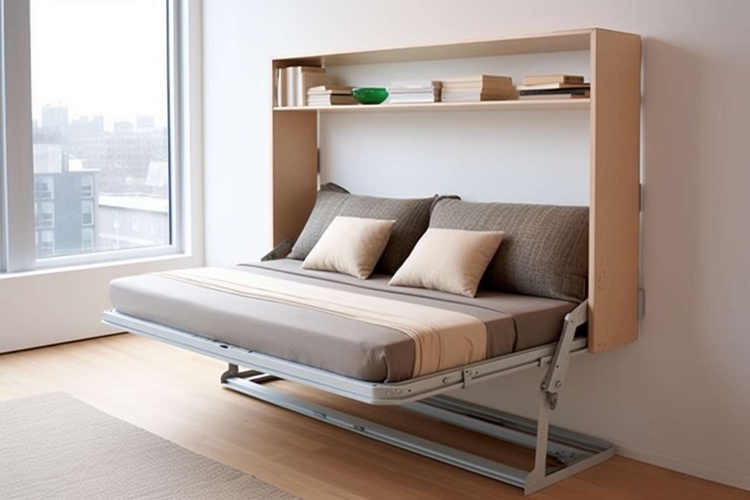Micro-Apartments: The Future of Urban Living?
In a world where city populations continue to surge and housing costs skyrocket, a new trend is emerging in the real estate market: micro-apartments. These compact living spaces, typically ranging from 150 to 400 square feet, are reshaping urban landscapes and challenging traditional notions of what constitutes a home. As developers and city planners grapple with housing shortages, micro-apartments offer a potential solution that's both innovative and controversial.

The surge in micro-apartment developments can be attributed to several factors. Urbanization has led to increased demand for city-center housing, while rising real estate prices have made traditional apartments unaffordable for many. Additionally, changing demographics and lifestyle preferences, particularly among millennials and young professionals, have created a market for smaller, more affordable living spaces in prime locations.
Design Innovations in Small Spaces
Architects and designers are rising to the challenge of creating functional and appealing living spaces within extremely limited square footage. The key lies in maximizing every inch through clever design solutions and multi-functional furniture.
Murphy beds that fold into walls, transforming dining tables, and modular storage units are just a few examples of the innovations being employed. Some micro-apartments feature high ceilings to create a sense of spaciousness, while others incorporate large windows to bring in natural light and create an illusion of more space.
Advanced technology also plays a crucial role. Smart home systems allow residents to control lighting, temperature, and even adjust furniture configurations with the touch of a button, making these small spaces more adaptable to various needs throughout the day.
Economic Implications for Renters and Investors
From an economic standpoint, micro-apartments present a mixed bag of opportunities and challenges. For renters, these units offer an entry point into desirable neighborhoods that might otherwise be out of reach. The lower absolute rent, despite a higher price per square foot, can make city living more accessible to young professionals and students.
Investors and developers see micro-apartments as a way to maximize returns on high-value urban land. By fitting more units into a building, they can potentially generate higher overall rental income. However, this comes with increased construction costs due to the need for more sophisticated design and higher-end finishes to make the small spaces livable.
The long-term investment potential of micro-apartments remains a topic of debate. While current demand is strong in many cities, it’s unclear whether this housing type will maintain its appeal over time or if it’s a temporary solution to current market pressures.
Regulatory Challenges and Urban Planning
The rise of micro-apartments has not been without controversy. City planners and local governments are grappling with how to regulate these new housing types. Concerns range from maintaining quality of life standards to preventing overcrowding and ensuring that micro-units don’t exacerbate income segregation in urban areas.
Some cities have embraced micro-apartments as a solution to housing shortages. For instance, New York City temporarily waived zoning laws to allow for the development of micro-unit pilot projects. Other municipalities have been more cautious, implementing minimum size requirements for new apartments or limiting the number of micro-units allowed in a development.
The impact on neighborhood dynamics is another consideration. While micro-apartments can increase population density, potentially revitalizing urban areas, they may also strain local infrastructure and services if not properly planned.
Psychological and Social Impacts of Micro-Living
Living in extremely small spaces can have significant psychological effects on residents. While some thrive in these efficient environments, finding them liberating and aligned with minimalist lifestyles, others may struggle with feelings of claustrophobia or the lack of personal space.
The social implications of micro-apartment living are also noteworthy. These developments often incorporate extensive communal areas, from shared kitchens and lounges to rooftop gardens, fostering a sense of community among residents. This can be particularly appealing in cities where social isolation is a growing concern.
However, critics argue that micro-apartments may not be suitable for long-term living or for families, potentially leading to high turnover rates and a transient neighborhood feel. The question of how these units impact work-life balance, especially in an era of increased remote work, adds another layer to the debate.
The Future Outlook for Micro-Apartments
As urban populations continue to grow and housing affordability remains a pressing issue, micro-apartments are likely to play an increasingly significant role in the real estate landscape. Their success and sustainability will depend on various factors, including evolving lifestyle preferences, economic conditions, and regulatory frameworks.
Innovations in design and technology will continue to enhance the livability of these small spaces. We may see advancements in modular construction techniques, making micro-apartments more cost-effective to build and potentially more adaptable to changing needs.
The COVID-19 pandemic has added new dimensions to the micro-apartment debate. While the desire for more space during lockdowns seemed to contradict the micro-living trend, the economic uncertainty has also reinforced the need for affordable urban housing options.
As the real estate market evolves, micro-apartments represent a fascinating intersection of architectural innovation, economic pressures, and shifting societal norms. Whether they become a lasting fixture of urban landscapes or a transitional phase in housing evolution remains to be seen. What’s clear is that they are challenging our perceptions of home and prompting important discussions about the future of urban living.





